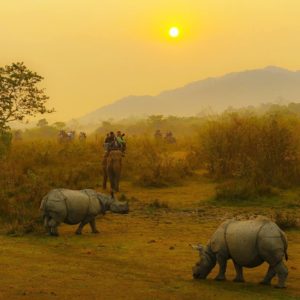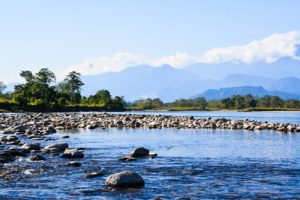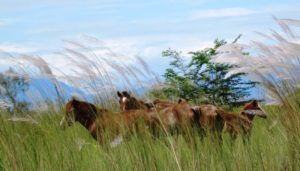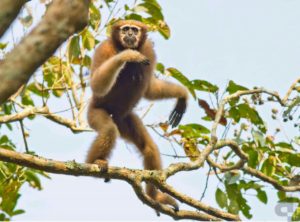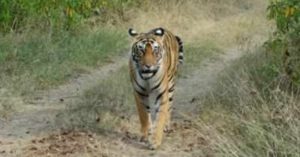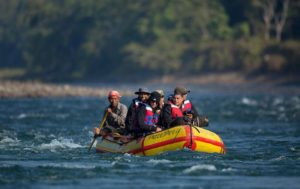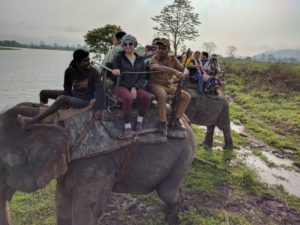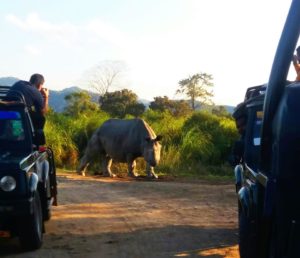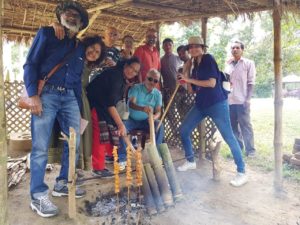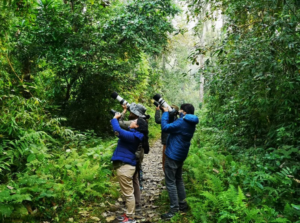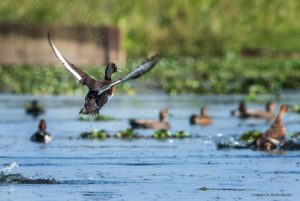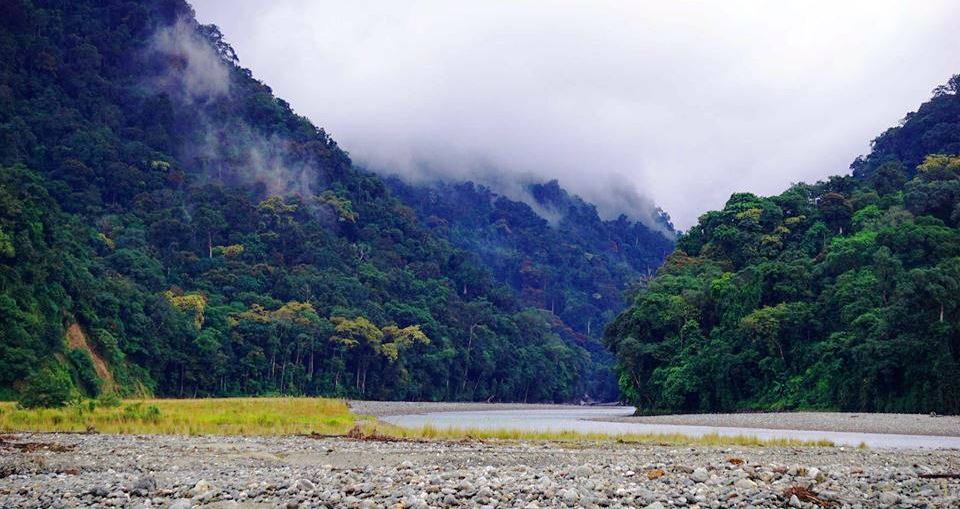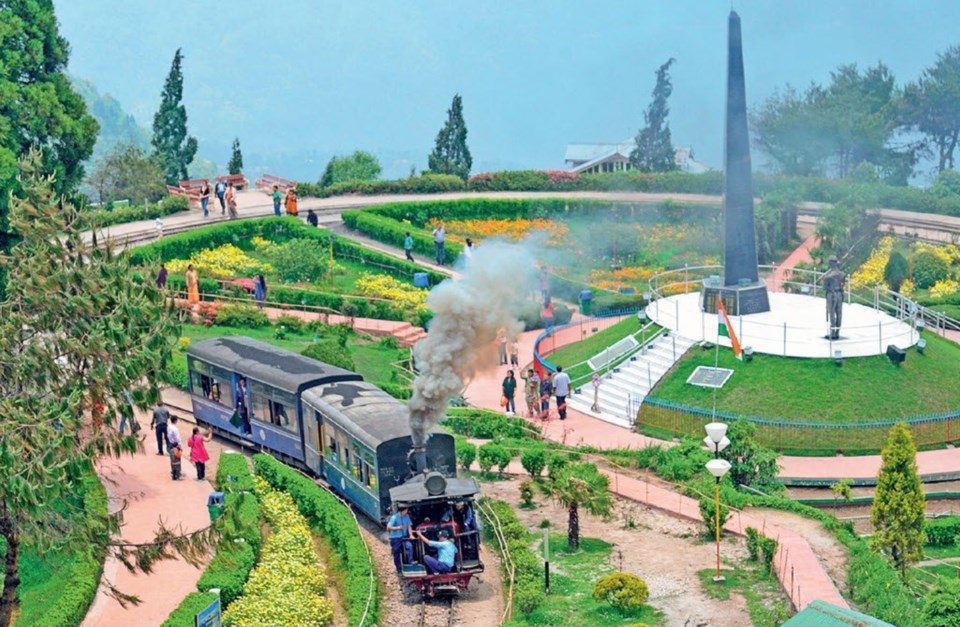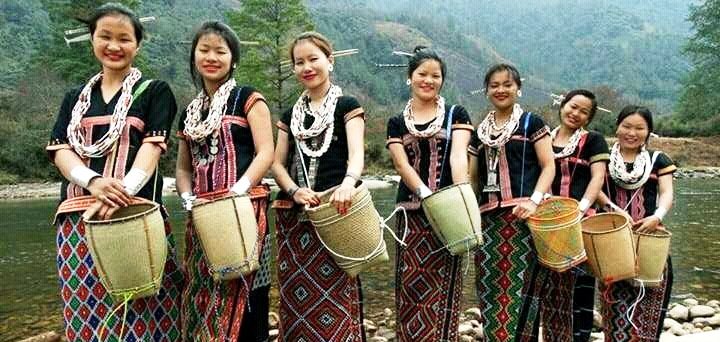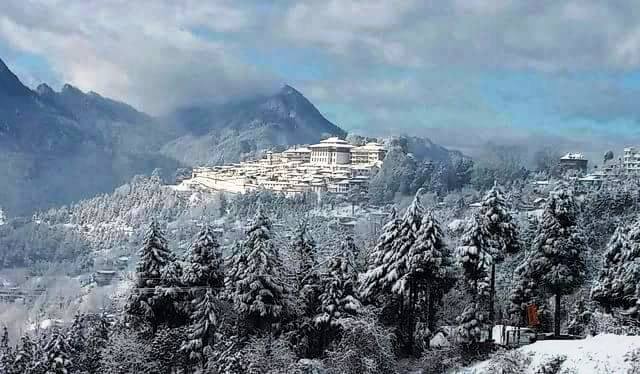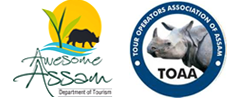Tour Highlight
- Elephant Safari in Kaziranga
The Experience Of Sitting On An Elephant’s Back, Passing Through The Lush Green Elephant Grasses And Pristine Water Bodies Of Kaziranga and Manas, Is Truly A Lifetime Experience
- Jeep Safari
The Jeep Safaris With The Naturalist In The Dense Forests Of Kaziranga And Manas Accommodating Rare Wildlife Species Will Surely Make Adrenaline Rush Through Your Blood
- Jia Bharali river at Nameri
A Couple Of Nights In Nameri And Namdapha Will Present You The Experience Of The True Wilderness Of Rainforests, Based At Our Comfortable Eco Camps, Exploring Forests, Pristine Lakes And Rivers On Foot And By Boat…
- Feral Horses at Dibru Saikhowa National Park
In Dibru Saikhowa, Take A Boat Ride To The Dolphin Watching Spot And The Migratory Birds. And Of Course Don’t Miss The Amazing Experience Of Sighting The Majestic Feral Horses (Junghali Ghura)
- Hoolock Gibbon in Hoollongapar Gibbon Sanctuary
Take A Early Morning Walk In Gibbon, Follow The Call Of The Gibbon Which Take You Through A Most Enchanted Jungle
Itineraries
Day 01: Arrive Guwahati or Barpeta / Manas National Park
Meeting upon arrival and depart for Manas National Park.
Manas National Park: Located in the Himalayan foothill Bhabar area in the western Assam, Manas was originally a game reserve since 1928 and become a tiger reserve in 1974. It was recognized as World Heritage Site in 1985 and declared as a National Park in 1990 with an area of 500 sq Kms and also the core area of 2600 sq kms. The Park harbours more then 20 endangered species like Tiger, Rhino, Indian Elephant, Pygmoi Hog, Golden Langoor, Golden Cat, Clouded Leopard, Loepard Cat. Jungle Cat etc. It is also an important bird area. White winged Wood Duck was recently recorder in the park.
Arrive and check in at Jungle Lodge.
Afternoon Jeep safari in the Bansbari range of Manas National Park
Overnight at Jungle Lodge.
Day 02: Manas National Park
Early morning Elephant Safari in Bansbari range of Manas National Park.
- Tiger in Manas
Late afternoon Jeep safari in Bansbari and Mathanguri range of Manas National Park.
Overnight at Jungle Lodge.
Day 03: Manas / Nameri National Park (340 Kms, 8 hrs drive)
Early morning Elephant Safari in Bansbari range of Manas National Park.
After breakfast depart for Nameri National Park.
Arrive Nameri and check in at Eco Camp.
Nameri National Park: The Nameri National Park of 200 sq kms area is located in the Sonitpur district, bordering Arunachal Pradesh and it is also the core area of Nameri Tiger Reserve (344sq kms). It is the home of Mammals like Elephant, Tiger, leopard, Sambar,Barking deer, Hog Deer, Wild Boar,Gaur, slow loris,gaplangur,Burmese ferret badger, and over 350 species of birds including White-winged Wood Duck, Ibisbill (uncommon), Ruddy Kingfisher, Palla’sfishing eagle,Lesser Adjutant stork , Greater spotted eagle,Rufous necked hornbill, Great pied Indian hornbill, Wreathed hornbill, Long-billed Ringed Plover, Sultan Tit, and Yellow-bellied and White-throated Fantails. Another important wild life sanctuary of Arunachal Pradesh The Pakhui (Pakke) wild life Sanctuary adjoins the Park on its North-Eastern point. The river Jia- Bhoroli and its tributaries namely the Diji, Dinai, Doigurung, Nameri, Dikorai, Kharietc crisscross the park. During rainy season A few jheels (during the rainy seasons) also dot the area. One can enjoy rafting in the Jia Bhoroli river in the south western boundary.
Rest of the time free at leisure
Overnight at hotel.
Day 04: Nameri National Park
Early morning go for the nature walk and the bird watching trip into the dense jungle of Nameri National Park with the forest guards.
- Rafting in Nameri
Afternoon you can opt for mild river rafting in Jia Bharali river adjoining to the Nameri National Park.
Breakfast, lunch and dinner at the camp.
Overight at the camp
Day 05: Nameri / Kaziranga National Park (115 Kms, 2 hrs drive)
Morning after breakfast depart for Kaziranga National Park.
Kaziranga National Park: Kaziranga National Park has become synonymous with successful conservations of Great One Horn Rhinoceros (from the Greek word, “rhino” means nose and “ceros” means horn) / Unicornis (from the Latin word, “uni” means one and “cornis” also means horn) and also a home of may other threatened species including Indian Elephant (Elephant Maximus), Tiger(Panthera tigris), Hoolock Gibbon (Bunipithecus hoolock), Ganges dolphin (Platanista gangetica),Sambar (Cervus unicolor), Barasingha or Swamp Deer (duvauceli), Hog Deer, Indian Muntjac (Muntiacus muntjak), Water Buffalo (Bubalus bubalis) and Gaur (Bos frontalis)etc.
There are also over 500 species of birds have been recorder in the park including 25 specis of globally threatened category. Over and above there are 21 rare and endangered species. In winter one can observe a large breeding population of Spot Bill Pelicans about one thousand breeding nests are found in a place which has been named as Pelican Colony in the Eastern Range.
Among the reptiles species like Water Monitor Lizard (Varanus salvator), Indian python (Python molurus), Cobra (Naja naja) and the King Cobra are found.
Arrive Kaziranga and check in at the Jungle Resort.
Overnight at resort
Day 06: Kaziranga National Park
- Elephant Safari
Early morning enjoy the elephant safari in the central (Kohora) range of Kaziranga. Later return to the resort for breakfast.
Afternoon visit the Kaziranga National Orchid and Biodiversity Park and witness more that 200 different species of Orchids. Also enjoy the different traditional dance forms and songs along with ethnic foods
- Jeep Safari in Kaziranga
Late afternoon enjoy the exclusive Jeep safari in the western (Bagori) range of Kaziranga.
Overnight at the resort.
Day 07: Kaziranga National Park
Morning after breakfast enjoy the exclusive Jeep safari in the Central (Kohora) range of Kaziranga.
- Guests enjoying ethnic feast at Natundenga
Afternoon enjoy the ethnic cuisine in the NATUNDENGA Karbi village adjoining Kaziranga National Park (Optional)
Late afternoon enjoy the exclusive Jeep safari in the Eastern (Agoratoli) range of Kaziranga.
Overnight at the resort.
Day 08 Kaziranga / Jorhat (96 Kms, 2 hrs drive)
Morning after breakfast depart for Jorhat.
Jorhat: The name “JORHAT” or “JOREHAUT” delived from two hats or markets which subsist on the two banks of the river Bhogdoi during the 18th Century, Jorhat was the last capital of the Ahom Kingdom(erstwhile ”Rangpur”). This flourishing town was completely destroyed by the Burmese invasions in1817 till the arrival of the British in 1824 under the leadership of David Scott and Captain Richard.
Arrive Jorhat and check in at the heritahe tea garden bungalow..
Afternoon visit the tea gardens
Overnight at bungalow.
Day 09: Jorhat / Hoollongapar Gibbon Sanctuary / Jorhat (40 Kms 1 way / 45 minutes drive)
Morning after breakfast visit:
- Hoollongapar Gibbon Sanctuary
Hoollongapar Gibbon Sanctuary: The Gibbon Wildlife Sanctuary in Jorhat District of Assam is the only protected area in India to be named after a primate species. The sanctuary with an area of 20.98 hectare is situated at 26°40″ to 26°45″ N and 94°20″ to 94°25″ E and is located in the south bank of the Great Brahmaputra river system .The sanctuary which harbors seven species of primates including Hoolock Gibbon has been declared mainly for the conservation of Hoolock Gibbon. Keeping in view the importance of GWLS as a stronghold of Hoolock gibbon, a program under the title “Conservation of Hoolock Gibbon through Education, Awareness and Socio-economic development of the fringe area community in Gibbon Wild Life Sanctuary, Assam, India” was launched. The program was supported by US Fish and Wildlife Service (GACF).
Overnight at Bungalow.
Day 10: Jorhat / Dibru Saikhowa National Park (195 Kms, 5 hrs drive)
Morning after breakfast depart for Dibru Saikhowa National Park.
Dibru Saikhowa National Park: Dibru Saikhowa National Park is one of the 19 (nineteen) biodiversity hotspots in the world. It mainly consists of semi wet evergreen forests, tropical moist deciduous forest, bamboo, cane brakes and grasslands. Situated in the flood plains of Brahmaputra, at an altitude of 118 m above sea level, Dibru-Saikhowa is a safe haven for many extremely rare and endangered species of wildlife, including over 300 species of avifauna both endangered and migratory, as well as various species of shrubs, herbs and rare medicinal plants.
Though the park was primarily meant for the conservation of White winged wood duck in its natural habitat, it is also the famous for its bright colored wild horses known as Feral Horses. Some rare and endangered animals of this sanctuary are Hoolock gibbon, capped langur, slow loris, water buffalo, tiger, elephant, gangetic river dolphin etc. Bird life consists of Spot billed pelican, White bellied heron, Pallah’s fishing eagle, Pale capped pigeon, Swamp francolin etc. and migratory birds like Geyleg goose, Brahmini duck, Bar-headed goose, pelican, Black stork etc.
Arrive and check I at jungle resort.
Overnight at resort.
Day 11: Dibru Saikhowa National Park
- Migratory birds in Dibru Saikhowa National Park
Morning after breakfast full day explore the Dibru Saikhowa National Park by country made boat and by walk.
Overnight at jungle resort.
Day 12: Dibru Saikhowa National Park / Dibrugarh Depart
Morning after breakfast in time transfer to Dibrugarh Airport for the onward destination.
Tour ends.
Inclusion and Exclusion
THE PACKAGE COST INCLUDES:
- All transport by a dedicated vehicle
- Accommodation for 11 nights.
- Daily breakfast at hotel.
- Two Elephant safaris and two jeep safaris in Kaziranga National Park with park entrances.
- One nature walk and one boat tour in Nameri National Park with park entrances
- One Elephant safari and three jeep safaris in Kaziranga National Park with park entrances.
- A guided visit to the Gibbon Wildlife Sanctuary with park entrances
- A guided full day boat safari in Dibru Saikhowa National park with park entrances.
- All parking, toll charges, driver’s allowances etc.
- 5 % GST as applicable
THE PACKAGE COST DOES NOT INCLUDE:
- Any meals other than mentioned above.
- Entrances to the monuments, parks other than mentioned above.
- Charges of the accompanying guide or local guide (if required)
- Any expenses occur due to natural calamities or which are not mentioned in the cost inclusions
- Any other expenses of personal nature i.e camera, laundry, telephone, any type of insurances, tips, portages etc.




